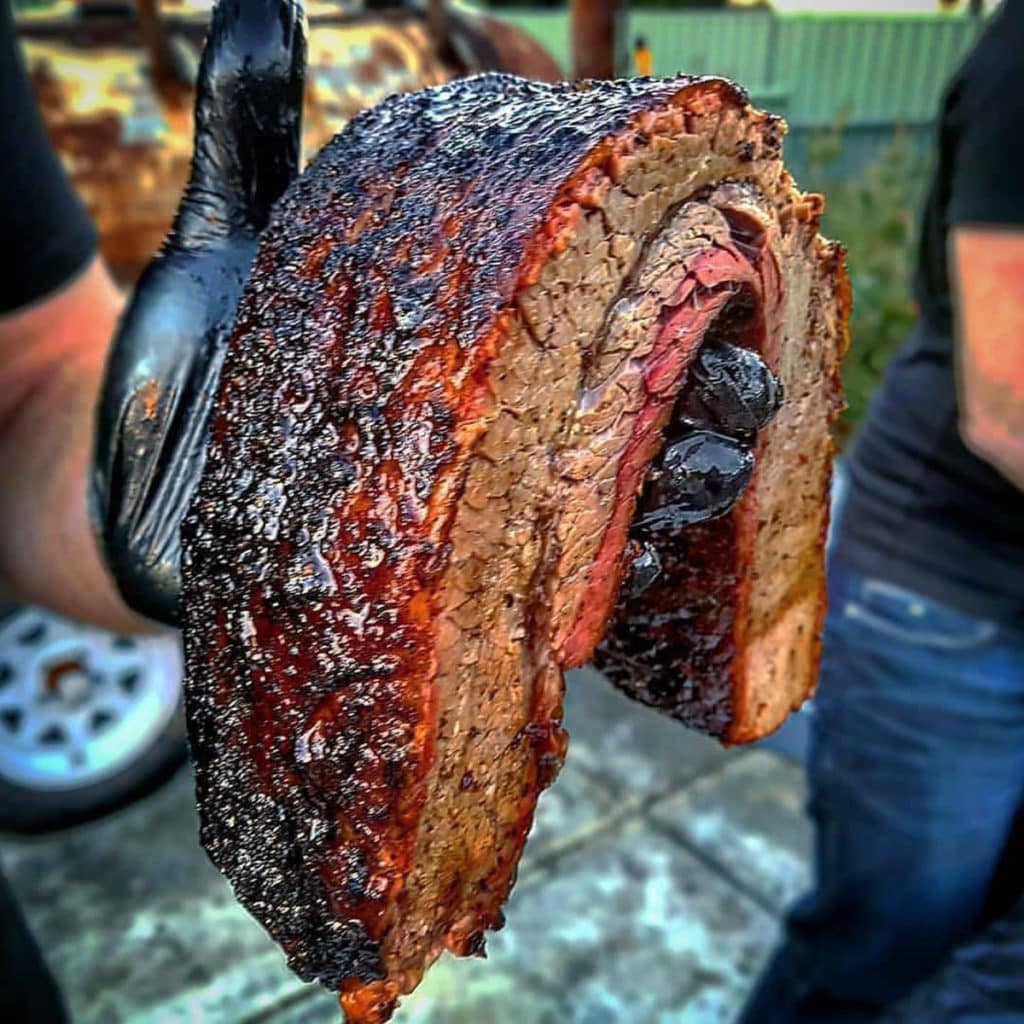The Top 5 Briskets Mistakes Everyone In Ohio Should Know (But Most Don’t)

September 1, 2024
Columbus, OH: I went from being okay at smoking brisket to good at smoking brisket after taking a one-day brisket smoking masterclass with a famous Pitmaster. The main trick to making world-class brisket is avoiding common mistakes. I will tell you the common mistakes, so you don’t have to spend time or money taking a class.
1. Not Knowing YOUR Best Smoking Temperature:
Here is one of the biggest lessons I learned. You don’t determine what temperature to smoke your brisket at. Your equipment does. A Pitmaster with a big 1000-gallon offset competition smoker can afford to smoke their brisket at 275°-280°. Their rigs are massive and can move enough air to keep the brisket cool enough to cook evenly. If you try to cook brisket at 275°-280° with a pellet, ceramic or electric smoker, you run a high risk of drying out or burning your brisket. This is because those types of smokers cannot move air the way the big offset smoker can. Here are the general best brisket smoking temperatures for the most common smokers:
- Large Offset Smoker (500 Gallons Plus): 275°-280°
- Medium to Small Offset Smokers (500 Gallons or Below): 250°-275°
- Vertical Smokers Like Weber Kettle or Weber Smokey Mountain: 225°-250°
- Pellet, Ceramic & Electric Smokers: 225°
2. Not Allowing Enough Time:
This has happened to the best of us. One weekend you smoke a brisket, and it cooks in the exact amount of time you thought it would. The next weekend you smoke a brisket of a similar size, and it takes 2 hours longer than you thought it would. This is because no two briskets are alike. One brisket will cook with no stall, yet another may stall for an hour or more. When smoking brisket, give yourself two more hours than you think you need. If it gets done early, great! You can let it rest longer. However, if it is not done in time, you will serve your disappointed family or guests something else for dinner.
3. Not Allowing Enough Time To Rest:
The Pitmaster who hosted our Masterclass spent the second most time on this topic. How you rest your brisket is far more important than most think. Here is why. Resting the brisket is important because it allows the rendered fat inside the brisket to spread throughout the meat. This process gives you moist, flavorful meat. For this reason, when the Pitmaster competes, he sometimes lets his brisket rest anywhere from 6-12 hours. However, most of us are not smoking brisket for competition, so here are the general guidelines he gave me.
- Brisket smoked for 8 hours or less: Immediately put in cooler until it cools down to 145°
- Brisket smoked for 8-12 hours: Allow the brisket to cool to 180° and then put it in the cooler until it cools down to 145°
- Brisket smoked for 12+ hours: Allow the brisket to cool to 170° and then put it in the cooler until it cools down to 145°
4. Not Being Consistent
When smoking a brisket, there is a lot you cannot control. You can’t control how long the brisket will stall, the temperature outside, the humidity, etc. However, you want to control everything else you can control and do that consistently. What I mean is some men will cook their brisket one way, and then on the next cook, they will completely change everything up by using new wood, temperature, grades of beef, rub, equipment, etc. So now, when the brisket is good or bad, they have no clue why. Unless your previous brisket was a complete disaster, when smoking your brisket, do the same thing every time. If you are experimenting, only change one variable at a time. This way, if the brisket is better or worse, you will know exactly why, and you can adjust on your next cook.
5. Not Using The Best Rub For YOUR Setup
The Pitmaster who hosted our Masterclass spent the most time on this topic. Here is something most people don’t know about seasoning brisket. It comes down to your equipment. The Pitmaster hosting our class is popular and has one of the best BBQ restaurants in the world. He said when he smokes brisket for his restaurant, he only puts salt and pepper on the brisket. This is because when it comes to flavor, his equipment does the work. He uses massive 1,000-gallon offset smokers. The massive offset smokers move tons of smoke and air. This process renders fat so well that he can afford just to use salt & pepper yet have amazing-tasting brisket. However, when he smokes brisket at home using equipment that does not move as much air and smoke (smaller smokers, ceramic smokers, pellet smokers, electric smokers, etc.), he seasons his brisket to add more flavor. Here are the biggest tips I learned about how he seasons brisket:
- Don’t cover the entire brisket in the seasoning because when it is packed with seasoning, it prevents the smoke from penetrating the meat.
- He has been using two rubs. One is a special in-house blend, and the second is Bald Buck seasoning
So, if you have a massive offset smoker, you are fine using salt and pepper only. If you have a smaller setup, use seasoning but don’t pack it onto the brisket because that will prevent smoke from penetrating the meat.
After the class, I looked up Bald Buck seasoning and saw many YouTube videos. I bought it, used it, and it was absolutely delicious. I recommend it if you like trying different rubs. Below is the best YouTube video I saw about the rub. Hope this helps!
